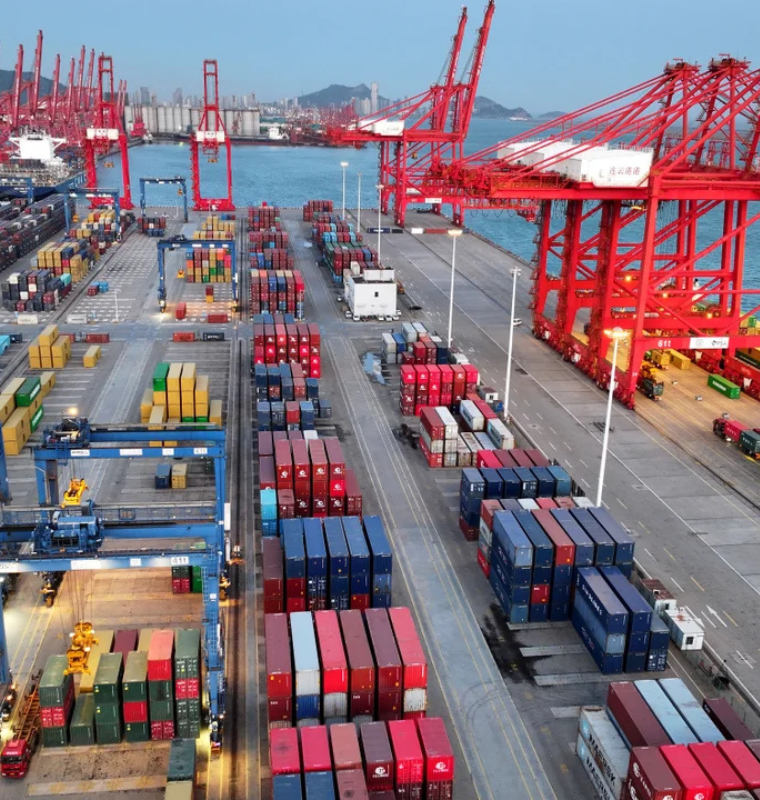Singapore and Nasdaq Launch Global Listing Bridge to Transform Cross Border IPO Access
Singapore and Nasdaq Launch Global Listing Bridge to Transform Cross Border IPO Access
By
David Goldfarb
Last updated:
November 20, 2025
First Published:
November 20, 2025

Photo: The Sttaits Times
Singapore Pushes to Revitalize Its Equity Market
Singapore is accelerating efforts to make its stock market more competitive as global companies seek efficient, low-friction access to capital. The latest step is a major collaboration between Singapore Exchange (SGX) and Nasdaq, introducing a unified framework designed to simplify dual listings between the United States and Singapore.
This initiative comes at a crucial moment as the Monetary Authority of Singapore (MAS) strengthens its support for the domestic equity ecosystem. With global liquidity shifting and investors demanding more transparent, efficient markets, Singapore is positioning itself as a strategic gateway for companies with operations in both Asia and the West.
A New Global Listing Board for Large Companies
At the heart of the partnership is the launch of a Global Listing Board, designed for firms with a market capitalization exceeding SG$2 billion (about US$1.5 billion). The joint initiative aims to give eligible companies seamless access to global investors, deeper capital pools and cross market liquidity.
SGX and Nasdaq describe the partnership as a breakthrough. Their shared statement highlights that the harmonized framework will create “a unified regulatory experience” so that companies can raise funds on two major exchanges through one streamlined compliance pathway.
A single set of documents, one review process and aligned regulatory requirements are targeted to go live by mid-2026. This dramatically reduces the administrative burden for multinational firms that previously had to undergo separate listing processes.
Benefits for Companies and Investors
SGX CEO Loh Boon Chye told CNBC that the new framework enhances liquidity and price discovery across different time zones. With listings active in both Singapore and the U.S., investors gain near 24 hour access to trading and risk management.
Loh emphasized that the ability to trade in both Singapore dollars and U.S. dollars provides additional flexibility for global investors while encouraging more balanced market participation.
Nasdaq CEO Adena Friedman echoed this sentiment, explaining that the dual listing bridge is “the first of its kind” and especially attractive for companies with strong operations in Asia that want global visibility without navigating multiple regulatory regimes.
Part of a Larger National Strategy to Boost Market Competitiveness
The move aligns with broader efforts by Singapore to reinforce its image as a dynamic, investor friendly market. In conjunction with the dual listing announcement, MAS also unveiled additional measures to boost market activity and improve long-term investor engagement.
Among these is a SG$30 million “Value Unlock” program aimed at helping local companies strengthen capital allocation strategies, improve corporate governance practices and enhance investor relations capabilities.
According to MAS, this is an ideal moment for firms to sharpen strategic communication and demonstrate clear value creation, especially in a period marked by shifting global capital flows.
Major Investments to Strengthen Singapore’s Fund Management Sector
To further support market depth, MAS announced it will allocate SG$2.85 billion to six Singapore-based asset managers. This builds on a previous SG$1.1 billion injected in July, signaling a strong commitment to boosting liquidity and stimulating investor participation in Singapore-listed equities.
Analysts say these moves collectively strengthen the investment ecosystem. CGS International noted that rising liquidity levels and targeted programs like “Value Unlock” help reinforce the value chain across the market.
Market Activity Is Rebounding
Singapore is already seeing positive momentum. MAS reported that average daily turnover in the third quarter of 2025 surged 16% year-on-year to SG$1.53 billion, the highest level since early 2021. Small and mid-cap stocks in particular have experienced renewed interest.
IPOs have also accelerated, raising more than SG$2 billion so far this year. Analysts say this marks one of Singapore’s strongest issuance periods in recent years.
Remaining Challenges and Regional Comparisons
Despite the momentum, experts caution that Singapore still faces structural challenges. CGS International noted that while a dual listing pathway may broaden regional investor access, the SGX still trails Nasdaq in liquidity, trading volume and global visibility.
Goldman Sachs analysts added that the details of the “Value Unlock” program are still emerging. They argue that more tangible corporate actions—similar to measures in Japan and South Korea such as dividend tax reductions and stronger disclosure requirements—may be needed for a significant market re-rating.
Since Singapore’s equities review group launched in August 2024, the Straits Times Index (STI) has risen about 30%. However, Japan and South Korea saw close to 60% market gains after implementing their respective reforms, underscoring the competitive landscape Singapore is navigating.
Outlook
The SGX-Nasdaq listing bridge marks an important turning point. By lowering barriers, simplifying compliance and enhancing access to global capital pools, Singapore aims to reinforce its relevance as a major financial hub.
If supported by sustained investor engagement, increased liquidity and further corporate reforms, Singapore’s equity market could enter a new phase of growth driven by deeper international participation.
Popular articles
Subscribe to unlock premium content
Why Some People Hire Professional Bystanders to Simulate Social Interaction in Public Spaces
.png)
The Rise of Micro-Memorials People Paying to Preserve Tiny Personal Moments in Luxury Miniature Sculptures
.png)
The Market of Paying Strangers to Share Their Most Embarrassing Stories in a Private Setting
.png)
Why Some People Hire Professional Bystanders to Simulate Social Interaction in Public Spaces
.png)
The Rise of Micro-Memorials People Paying to Preserve Tiny Personal Moments in Luxury Miniature Sculptures
.png)
Why Some People Hire Professional Bystanders to Simulate Social Interaction in Public Spaces
.png)








